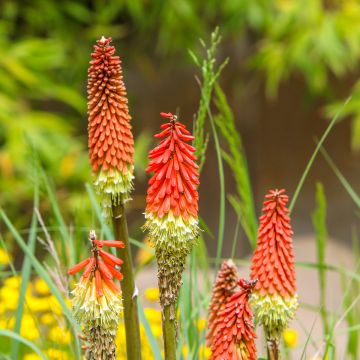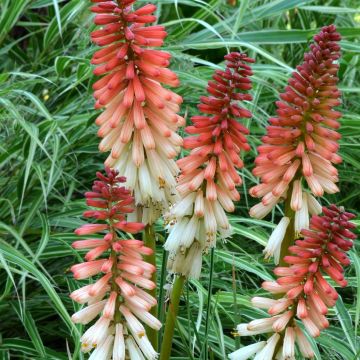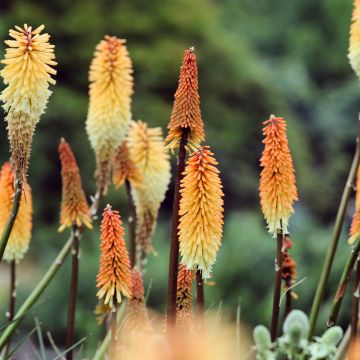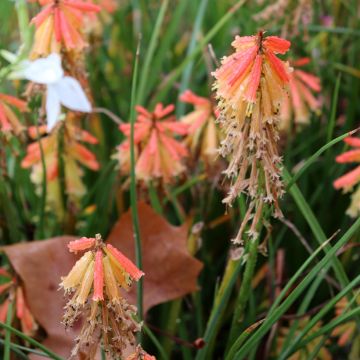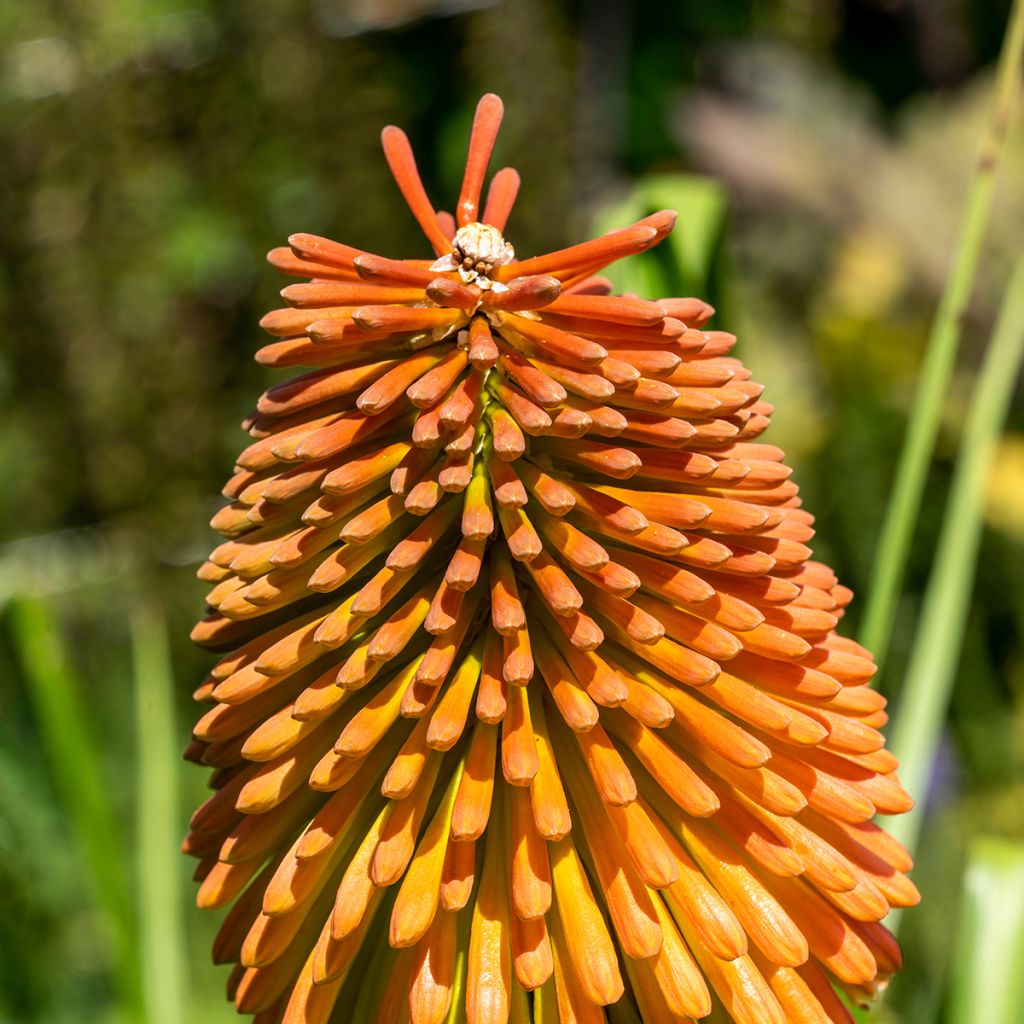

Kniphofia rooperi - Rooper's Red Hot Poker


Kniphofia rooperi - Rooper's Red Hot Poker


Kniphofia rooperi - Rooper's Red Hot Poker


Kniphofia rooperi - Rooper's Red Hot Poker


Kniphofia rooperi - Rooper's Red Hot Poker
Kniphofia rooperi - Rooper's Red Hot Poker
Kniphofia rooperi
Rooper's Red-hot Poker
This item cannot be shipped to the selected country
Delivery charge from €5.90
More information
Schedule delivery date,
and select date in basket
This plant carries a 12 months recovery warranty
More information
We guarantee the quality of our plants for a full growing cycle, and will replace at our expense any plant that fails to recover under normal climatic and planting conditions.
From €5.90 for pickup delivery and €6.90 for home delivery
Express home delivery from €8.90.
Does this plant fit my garden?
Set up your Plantfit profile →
Description
Kniphofia rooperi is a very beautiful species of botanical tritoma, rarely used in gardens. This large evergreen perennial is particularly ornamental and vigorous. The plant produces several robust stems in late summer, exceeding 1.2m (4ft) in height, each carrying a wide, ovoid-shaped spike of a scarlet red colour quickly turning to a bright and soft yellow-orange. The strong rosette of long dark green keeled leaves shows the plant's vigour. This large hardy perennial is undoubtedly one of the most beautiful species to acclimatise in moist, even clayey soil. It is magnificent planted in isolation, or standing out in a naturalistic meadow.
Kniphofia rooperi is a tall perennial native to South Africa, belonging to the Asphodelaceae family. This evergreen plant forms solid rosettes at least 70cm (28in) wide, composed of long deeply keeled leaves with very toothed edges, quite wide at the base, tapering to a beautiful dark green tip. In June, robust floral stems appear above the foliage, often reaching 1.5m (5ft) from the ground. From August to October, the stems bear particularly opulent terminal inflorescences for a tritoma. Its wide ovoid spikes are composed of numerous tubular flowers reaching 4cm (2in) in length. They open in bright red, then turn to yellow-orange, ripening to pale-yellow to green from the base of the spike to the top.
Their exotic appearance charmed our grandmothers. Tritomas are surprising plants, but nevertheless very robust, making them perfect candidates for the gardens of rectories or countryside flower beds where they light up with their colourful torches. Kniphofia rooperi thrives in moist soil, even clayey if properly drained, like some grasses (Calamagrostis brachytricha, Deschampsia cespitosa 'Tardiflora') with which it is magnificent, in a natural or contemporary style. It can also be paired with loosestrifes, ligularias, and eupatoriums, which also appreciate moist soils. It is well highlighted when planted in isolation, or on the edge of a water feature, in contrast to the opulent mass of osmundas or gunneras. Tritomas pair well with perennials with light blooms.
Compared to other varieties, this species takes a little longer to establish and therefore to flower, sometimes requiring a minimum of 2 years of cultivation, or even 3 years, before the first inflorescences are observed.
Report an error about the product description
Kniphofia rooperi - Rooper's Red Hot Poker in pictures
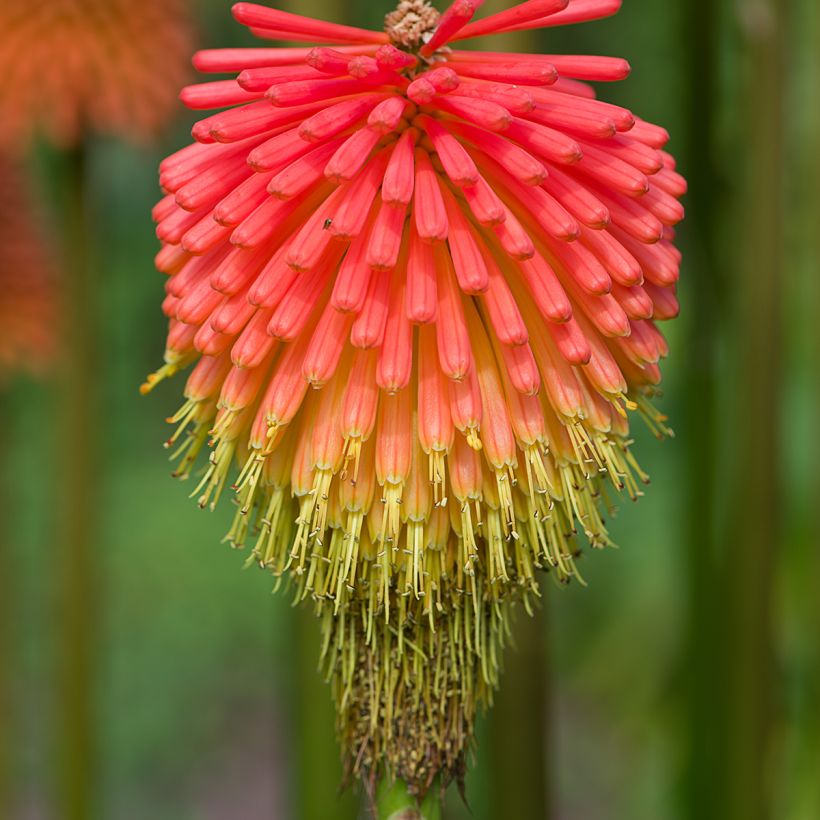





Flowering
Foliage
Plant habit
Botanical data
Kniphofia
rooperi
Asphodelaceae
Rooper's Red-hot Poker
South America
Other Kniphofia - Red-Hot Pokers
Planting and care
It prefers loamy, sandy and humus-bearing, or marshy soils, which are fertile and moist. In our garden, it thrives in rich, deep, and well-drained clay soil, forming beautiful clumps in late summer. It appears to be more cold-resistant than literature suggests, as it has withstood temperatures around -15°C (5°F) without any issues. Place it in a sunny location to achieve a beautiful flowering in late summer. Clean the rosettes in late winter, removing all dried or rotting leaves that would hinder the growth of new spring shoots. Remove faded flowers at the end of the season.
Planting period
Intended location
Care
-
, onOrder confirmed
Reply from on Promesse de fleurs
Haven't found what you were looking for?
Hardiness is the lowest winter temperature a plant can endure without suffering serious damage or even dying. However, hardiness is affected by location (a sheltered area, such as a patio), protection (winter cover) and soil type (hardiness is improved by well-drained soil).

Photo Sharing Terms & Conditions
In order to encourage gardeners to interact and share their experiences, Promesse de fleurs offers various media enabling content to be uploaded onto its Site - in particular via the ‘Photo sharing’ module.
The User agrees to refrain from:
- Posting any content that is illegal, prejudicial, insulting, racist, inciteful to hatred, revisionist, contrary to public decency, that infringes on privacy or on the privacy rights of third parties, in particular the publicity rights of persons and goods, intellectual property rights, or the right to privacy.
- Submitting content on behalf of a third party;
- Impersonate the identity of a third party and/or publish any personal information about a third party;
In general, the User undertakes to refrain from any unethical behaviour.
All Content (in particular text, comments, files, images, photos, videos, creative works, etc.), which may be subject to property or intellectual property rights, image or other private rights, shall remain the property of the User, subject to the limited rights granted by the terms of the licence granted by Promesse de fleurs as stated below. Users are at liberty to publish or not to publish such Content on the Site, notably via the ‘Photo Sharing’ facility, and accept that this Content shall be made public and freely accessible, notably on the Internet.
Users further acknowledge, undertake to have ,and guarantee that they hold all necessary rights and permissions to publish such material on the Site, in particular with regard to the legislation in force pertaining to any privacy, property, intellectual property, image, or contractual rights, or rights of any other nature. By publishing such Content on the Site, Users acknowledge accepting full liability as publishers of the Content within the meaning of the law, and grant Promesse de fleurs, free of charge, an inclusive, worldwide licence for the said Content for the entire duration of its publication, including all reproduction, representation, up/downloading, displaying, performing, transmission, and storage rights.
Users also grant permission for their name to be linked to the Content and accept that this link may not always be made available.
By engaging in posting material, Users consent to their Content becoming automatically accessible on the Internet, in particular on other sites and/or blogs and/or web pages of the Promesse de fleurs site, including in particular social pages and the Promesse de fleurs catalogue.
Users may secure the removal of entrusted content free of charge by issuing a simple request via our contact form.
The flowering period indicated on our website applies to countries and regions located in USDA zone 8 (France, the United Kingdom, Ireland, the Netherlands, etc.)
It will vary according to where you live:
- In zones 9 to 10 (Italy, Spain, Greece, etc.), flowering will occur about 2 to 4 weeks earlier.
- In zones 6 to 7 (Germany, Poland, Slovenia, and lower mountainous regions), flowering will be delayed by 2 to 3 weeks.
- In zone 5 (Central Europe, Scandinavia), blooming will be delayed by 3 to 5 weeks.
In temperate climates, pruning of spring-flowering shrubs (forsythia, spireas, etc.) should be done just after flowering.
Pruning of summer-flowering shrubs (Indian Lilac, Perovskia, etc.) can be done in winter or spring.
In cold regions as well as with frost-sensitive plants, avoid pruning too early when severe frosts may still occur.
The planting period indicated on our website applies to countries and regions located in USDA zone 8 (France, United Kingdom, Ireland, Netherlands).
It will vary according to where you live:
- In Mediterranean zones (Marseille, Madrid, Milan, etc.), autumn and winter are the best planting periods.
- In continental zones (Strasbourg, Munich, Vienna, etc.), delay planting by 2 to 3 weeks in spring and bring it forward by 2 to 4 weeks in autumn.
- In mountainous regions (the Alps, Pyrenees, Carpathians, etc.), it is best to plant in late spring (May-June) or late summer (August-September).
The harvesting period indicated on our website applies to countries and regions in USDA zone 8 (France, England, Ireland, the Netherlands).
In colder areas (Scandinavia, Poland, Austria...) fruit and vegetable harvests are likely to be delayed by 3-4 weeks.
In warmer areas (Italy, Spain, Greece, etc.), harvesting will probably take place earlier, depending on weather conditions.
The sowing periods indicated on our website apply to countries and regions within USDA Zone 8 (France, UK, Ireland, Netherlands).
In colder areas (Scandinavia, Poland, Austria...), delay any outdoor sowing by 3-4 weeks, or sow under glass.
In warmer climes (Italy, Spain, Greece, etc.), bring outdoor sowing forward by a few weeks.

































